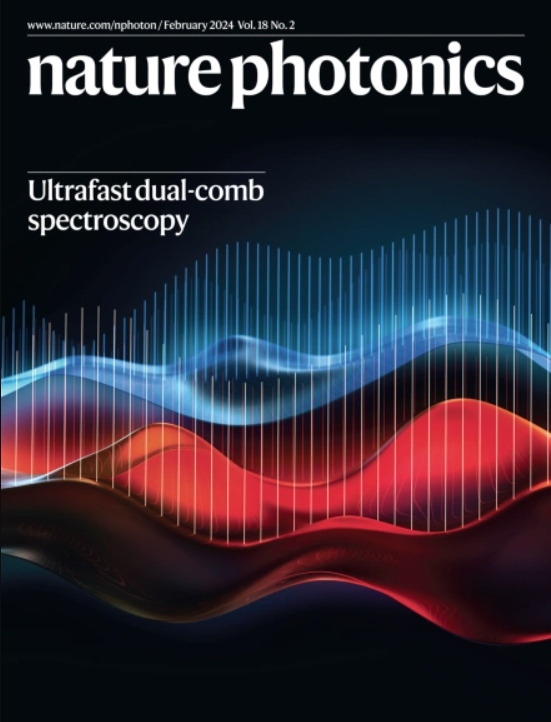Tunable coherent mixed-dimensional perovskite heterojunctions and quantum wells grown from solution
IF 32.9
1区 物理与天体物理
Q1 OPTICS
引用次数: 0
Abstract
Coherent heterojunctions, quantum wells and multiple quantum wells are needed for high-performance devices; these are generally grown via a dedicated vapour phase epitaxy process. Here we demonstrate the growth of coherent perovskite heterojunctions and quantum wells made of mixed-dimensional perovskites using a solution process. By exploiting the solubility difference of methylammonium (MA+) and 4-(aminomethyl)piperidinium (4AMP2+), we assemble layered perovskites with different layer numbers. The resulting 4AMP-MAn–1PbnI3n+1 materials each with different layer numbers or bandgaps form quantum wells. Heterojunctions and quantum wells made of 4AMP-MA2Pb3I10 (n = 3) and 4AMP-MAPb2I7 (n = 2) with various barrier thickness are tailored by the solution temperature profile during crystal growth. Multiple quantum wells have been formed by cycling temperature profiles. The planar heterojunction and quantum wells have lattice matching without interfacial defects, and exhibit strong thermal stability. Type I band alignment at the n = 2/n = 3 heterojunction is confirmed by both computation and optical studies. This study opens a new direction for the development of sophisticated perovskite heterojunction and quantum well devices. Solution-grown perovskite heterojunctions and quantum wells bring new opportunities for exploring semiconductor physics in a convenient manner


可调谐相干混合维钙钛矿异质结和从溶液中生长的量子阱
高性能器件需要相干异质结、量子阱和多量子阱;这些通常是通过专用气相外延工艺生长的。在这里,我们展示了由混合维钙钛矿制成的相干钙钛矿异质结和量子阱的生长。利用甲基铵(MA+)和4-(氨基甲基)胡椒啶(4AMP2+)的溶解度差异,我们组装了不同层数的层状钙钛矿。由此产生的4AMP-MAn-1PbnI3n +1材料具有不同的层数或带隙,形成量子阱。根据晶体生长过程中的溶液温度分布,对具有不同势垒厚度的4AMP-MA2Pb3I10 (n = 3)和4AMP-MAPb2I7 (n = 2)的异质结和量子阱进行了定制。通过循环温度分布形成了多个量子阱。平面异质结和量子阱晶格匹配,无界面缺陷,具有较强的热稳定性。计算和光学研究证实了n = 2/n = 3异质结处的I型带对准。本研究为复杂钙钛矿异质结和量子阱器件的发展开辟了新的方向。
本文章由计算机程序翻译,如有差异,请以英文原文为准。
求助全文
约1分钟内获得全文
求助全文
来源期刊

Nature Photonics
物理-光学
CiteScore
54.20
自引率
1.70%
发文量
158
审稿时长
12 months
期刊介绍:
Nature Photonics is a monthly journal dedicated to the scientific study and application of light, known as Photonics. It publishes top-quality, peer-reviewed research across all areas of light generation, manipulation, and detection.
The journal encompasses research into the fundamental properties of light and its interactions with matter, as well as the latest developments in optoelectronic devices and emerging photonics applications. Topics covered include lasers, LEDs, imaging, detectors, optoelectronic devices, quantum optics, biophotonics, optical data storage, spectroscopy, fiber optics, solar energy, displays, terahertz technology, nonlinear optics, plasmonics, nanophotonics, and X-rays.
In addition to research papers and review articles summarizing scientific findings in optoelectronics, Nature Photonics also features News and Views pieces and research highlights. It uniquely includes articles on the business aspects of the industry, such as technology commercialization and market analysis, offering a comprehensive perspective on the field.
 求助内容:
求助内容: 应助结果提醒方式:
应助结果提醒方式:


